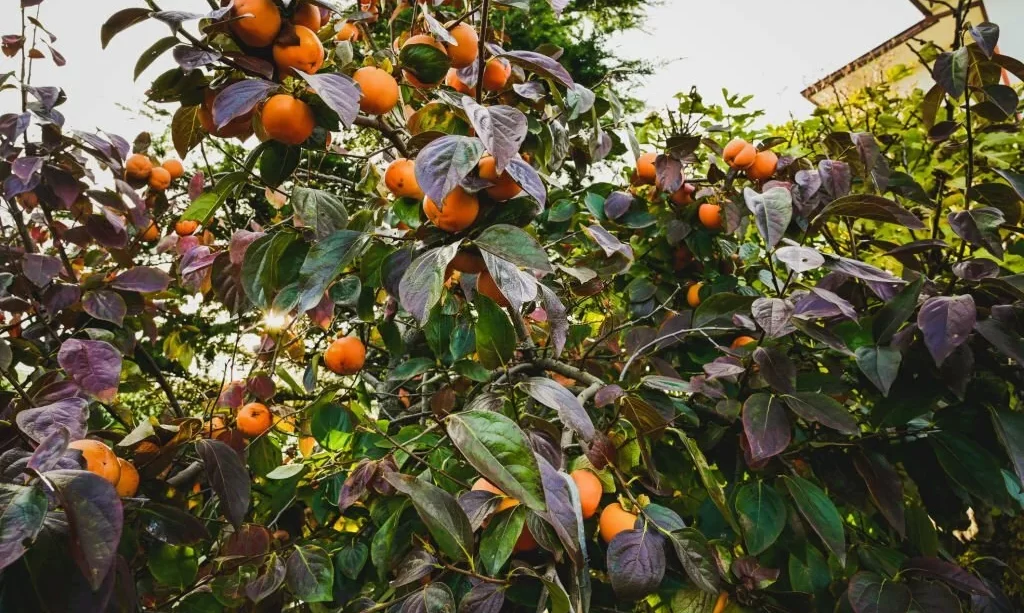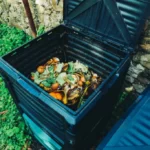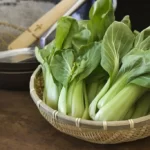In the realm of native trees, the wild persimmon tree stands as a symbol of nature’s bounty and resilience. The wild persimmon, scientifically known as Diospyros virginiana, is a native tree species found in North America. Not only does it offer a sweet and flavorful fruit that has been cherished for generations, but it also plays a crucial role in various ecosystems. Recognizing and identifying wild persimmon trees is a valuable skill for both nature enthusiasts and foragers, as it allows you to appreciate their unique qualities and the ecosystems they support.
This article will serve as your guide on how to identify a wild persimmon tree. We will delve into the physical characteristics of these trees, highlighting their leaves, bark, branches, and distinctive features. By the end, you’ll have the knowledge needed to spot a wild persimmon tree in the wild and understand its ecological importance.
Physical Characteristics of Wild Persimmon Trees
Wild persimmon trees are known for their distinct appearance. Here are some key physical characteristics that will help you identify these trees:
- Size and Shape: Wild persimmon trees are relatively small to medium-sized, typically ranging from 20 to 40 feet in height. They have a rounded or oval-shaped crown, making them ideal for both wild and cultivated landscapes.
- Bark: The bark of wild persimmon trees is dark gray to black and is deeply furrowed, creating distinctive blocks or squares on the trunk. This unique bark pattern is a key identifier.
- Foliage: The leaves of the wild persimmon tree are alternately arranged, with a glossy appearance. They are oblong or elliptical in shape, typically measuring 2 to 6 inches in length.
- Branches: Wild persimmon trees have strong, slender branches that often grow horizontally, creating a somewhat open and airy canopy. The branches are studded with small, hard spines that provide protection against browsing animals.
- Fruit: While not always present, wild persimmon trees produce small, green fruit that turns orange to reddish-orange as it ripens. The fruit is round or slightly elongated and often remains on the tree into the winter months.
- Flowers: In the spring, wild persimmon trees bloom with small, fragrant, bell-shaped flowers. These flowers are a creamy white to pale yellow and have a delicate appearance.
- Wood: The wood of wild persimmon trees is known for its hardness and durability, making it sought after for various applications, including golf club heads and furniture.
Understanding these physical characteristics will significantly aid in the identification of wild persimmon trees as you explore natural landscapes.
Leaves of a Wild Persimmon Tree
The leaves of wild persimmon trees are noteworthy for their glossy appearance and oblong to elliptical shape. They are typically dark green on the upper surface and a paler shade of green on the underside. These leaves are alternately arranged along the branches, and their size typically ranges from 2 to 6 inches in length.
The leaf margins may be smooth or have shallow, irregular serrations. During the fall, these leaves turn a beautiful array of warm colors, including shades of yellow, orange, and red, adding to the tree’s visual appeal.
Identifying the leaves of a wild persimmon tree is a key step in recognizing this species in the wild, especially during the growing season. Whether you’re a nature enthusiast or forager, understanding these leaves is essential for appreciating the ecological and culinary significance of wild persimmon trees.
Bark and Branches
The bark and branches of wild persimmon trees offer additional distinctive features that aid in identification:
- Bark: The bark of a wild persimmon tree is one of its most distinguishing features. It is dark gray to black, creating a sharp contrast against the tree’s leaves. The bark is deeply furrowed, forming distinctive blocks or squares on the trunk. This unique pattern sets wild persimmon trees apart from many other tree species in their natural habitat. The deeply furrowed bark serves as a visual signature and helps identify these trees, especially during the winter when leaves and fruit are absent.
- Branches: Wild persimmon trees have slender and flexible branches. These branches often grow horizontally, which contributes to the open and airy canopy of the tree. An interesting feature of wild persimmon branches is the presence of small, hard spines or thorns. These spines may serve as a defense against browsing animals, and they can be another telltale sign when identifying these trees.
Understanding the distinctive bark pattern and the presence of spines on the branches will prove valuable in the identification of wild persimmon trees, particularly during the dormant winter months.
Flowers and Fruit
Wild persimmon trees produce flowers and fruit that are unique in appearance and seasonality:
- Flowers: In the spring, wild persimmon trees bloom with small, fragrant, bell-shaped flowers. These flowers are usually a creamy white to pale yellow and have a delicate, attractive appearance. Their fragrance can be quite pleasant and serves as a pollinator attractant.
- Fruit: Wild persimmon trees bear small, round to slightly elongated fruit, which is initially green and gradually turns to a beautiful reddish-orange color as it ripens. The fruit’s size ranges from approximately 1 to 2 inches in diameter. What makes wild persimmon fruit especially notable is that it often remains on the tree into the winter months, providing a vital food source for wildlife during the colder seasons.
The appearance and seasonal timing of the flowers and fruit can be pivotal in identifying wild persimmon trees in their native habitat. These characteristics provide valuable ecological benefits by supporting local pollinators and serving as a crucial food source for wildlife.
Habitat and Geographic Distribution
Wild persimmon trees are commonly found in a variety of natural habitats across North America. Understanding the preferred habitat and geographic distribution of these trees can be crucial for identification:
- Habitat: Wild persimmon trees thrive in a range of environments, including woodlands, riparian zones, and open fields. They prefer well-drained soil and are often found in areas with ample sunlight. While they can tolerate various soil types, they tend to grow best in loamy, fertile soils.
- Geographic Distribution: Wild persimmon trees are native to the eastern and central United States. They can be found from New England down to Florida and westward to Texas and Nebraska. Their adaptability to different climates and soil conditions has allowed them to flourish across a broad geographical range.
Being aware of the preferred habitat and regional distribution of wild persimmon trees will help you locate these trees in their natural settings. This knowledge is essential for those interested in conserving and appreciating the ecological significance of these native trees.
Additional Identification Tips
Identifying a wild persimmon tree involves more than just recognizing individual features. Here are some additional tips to enhance your ability to identify these remarkable trees:
- Seasonal Changes: Pay attention to seasonal changes. During the spring, wild persimmon trees bloom with fragrant, bell-shaped flowers, and in the fall, the leaves turn various shades of yellow, orange, and red, adding a pop of color to the landscape. Understanding these seasonal cues can make identification easier.
- The Shape of the Fruit: The shape of the fruit, which can vary from round to slightly elongated, is another key identifier. It’s important to note that wild persimmon fruit is edible but should only be consumed when fully ripe, as unripe fruit can be astringent and unpleasant to eat.
- Scent: Rubbing the leaves and fruit and taking a moment to smell them can be another helpful identifying characteristic. The leaves of wild persimmon trees often have a mild, pleasing fragrance, and the ripe fruit emits a sweet, fruity aroma.
- Male and Female Trees: Wild persimmon trees are dioecious, meaning they have male and female trees. Female trees bear fruit, while male trees do not. Being able to distinguish between male and female trees can provide insight into fruit production.
Confusing Species
While wild persimmon trees have unique characteristics, there are some tree species that may be mistaken for them. These include the black gum tree (Nyssa sylvatica) and the American persimmon (Diospyros lotus). Key differences between these species and the wild persimmon tree include variations in bark, fruit shape, and fruit palatability. A careful examination of the features mentioned in this guide should help you differentiate between these species and identify the wild persimmon accurately.
Uses and Significance
Wild persimmon trees hold both culinary and ecological significance. The sweet and flavorful fruit, when fully ripe, can be used in various recipes, including puddings, pies, jams, and preserves. These trees also provide essential habitat and food for local wildlife, including birds, mammals, and insects. Preserving and appreciating wild persimmon trees is not only about enjoying their fruits but also about contributing to the biodiversity of your local ecosystem.
Conclusion
In the world of native trees, the wild persimmon tree stands as an enduring symbol of nature’s bounty. Recognizing these trees, with their distinctive characteristics such as bark patterns, fruit, and fragrant flowers, is not only a skill but a gateway to understanding the importance of native trees in our ecosystems.
As you embark on the journey of identifying wild persimmon trees in your surroundings, you gain an appreciation not only for their aesthetic and culinary value but also for their role in supporting local wildlife. These trees enrich our landscapes and connect us to the wonders of the natural world.
By familiarizing yourself with the features and seasonal changes of wild persimmon trees, you can better understand their importance in both the wild and cultivated landscapes. Whether you’re a nature enthusiast, a forager, or simply a lover of the outdoors, recognizing these unique trees is a step toward preserving the biodiversity and beauty of our natural environments.




